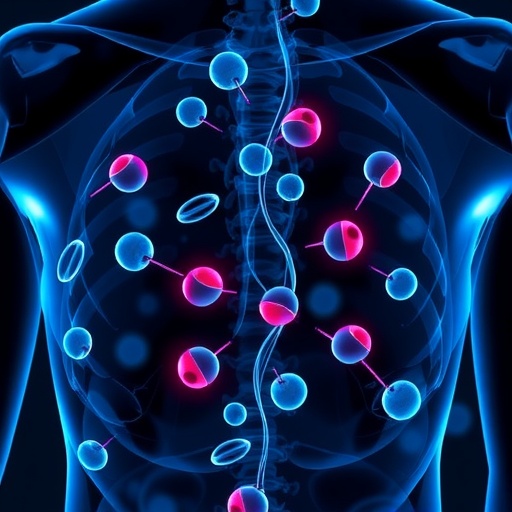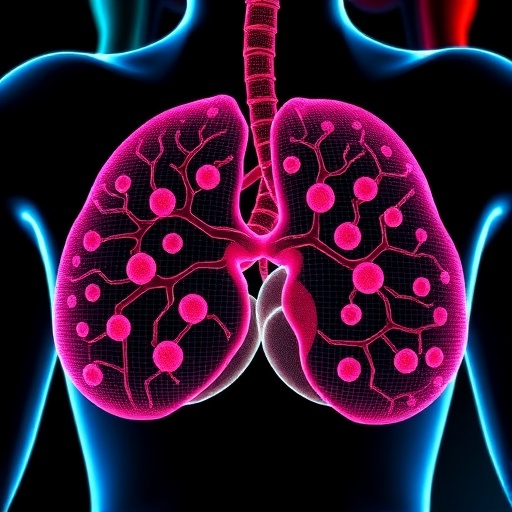
In the intricate architecture of human tissues, structural anisotropy plays a pivotal role in their functionality. This phenomenon refers to the directional dependence of a material’s mechanical properties, largely attributed to the spatial alignment of cells and the extracellular matrix (ECM). Anisotropy is vital for various physiological functions across different biological systems, whether it be the contraction of muscle tissues, the locomotion facilitated by tendons, or the optical clarity required for vision in the cornea. The restoration of tissue anisotropy becomes imperative in the face of injury or disease, influencing the success of tissue regeneration efforts.
In a living organism, the emergence of tissue anisotropy unfolds as a dynamic process influenced by cell patterning alongside the synthesis and organization of the ECM. During development, tissues adopt their anisotropic architecture through the accumulation of signaling cues, mechanical forces, and intercellular interactions. However, the natural healing process in response to injury can disturb this delicate organization, which can ultimately compromise the tissue’s functionality. Hence, there lies a significant gap in knowledge regarding how the orchestrated interplay of cells and ECM can be leveraged to guide tissue regeneration effectively.
Contrasting with in vivo regeneration, bioengineering strategies to restore tissue anisotropy typically involve the application of resorbable scaffolds equipped with specific cues intended to manipulate cellular behavior and ECM deposition. These scaffolds serve as a temporary framework, guiding cells in their migration, alignment, and functional maturation. Nevertheless, this engineered organization can be undermined by the complexities of in vivo tissue regeneration, wherein the dynamics of cell behavior and ECM remodeling may deviate from initial design intentions.
The basic premise behind employing engineered scaffolds to re-establish anisotropic tissues is that they mimic the natural environment, offering surface topographies, mechanical properties, and biochemical cues that are conducive to cell orientation and alignment. Various studies have emphasized the importance of matrix stiffness and geometric features in dictating cellular fate and behavior, underscoring the need for a more comprehensive understanding of how these factors intersect to promote structural anisotropy.
Despite advancements in bioengineering techniques, a critical knowledge gap remains in our understanding of how engineered tissues respond to in vivo conditions post-implantation. Factors such as inflammation, vascularization, and remodelling processes all play a role in altering the intended microarchitecture of these neo-tissues. As engineered constructs compete for resources and interact with host immune responses, there is a risk that they may not adequately replicate the native anisotropic structures, leading to impaired function.
Consequently, it is essential to explore in more depth the mechanisms that underlie the development and maintenance of structural anisotropy in native tissues. Studies utilizing reductionist in vitro models can illuminate the cellular and molecular driving forces that dictate anisotropic behavior. By elucidating how cells interact with the ECM, how they respond to mechanical stresses, and how they communicate with one another, researchers can glean profound insights that inform the design of more effective bioengineering strategies.
Moreover, the integration of emerging technologies such as 3D bioprinting and bioactive materials into scaffold design may present novel avenues for enhancing structural anisotropy. Advanced material formulations that dynamically respond to biological cues or mechanical forces could provide the necessary adaptability and resilience for engineered tissues, allowing them to better withstand the rigors of in vivo environments. Significantly, this adaptability could help ensure that tissues not only regain their structural integrity but also restore their functional capabilities.
As we aim to bridge the chasm between engineered and natural anisotropic tissues, it becomes increasingly important to investigate potential biological cues that could modulate ECM remodeling and tissue organization. For instance, the use of growth factors or small-molecule agents that target specific intracellular signaling pathways may be instrumental in directing the alignment of cells and matrices in engineered constructs. Additionally, examining how mechanical stimuli can be harnessed to promote cellular guidance and ECM deposition could yield valuable strategies for enhancing tissue repair.
Ongoing interdisciplinary research combining bioengineering, developmental biology, and materials science will be crucial in unraveling the complexities related to structural anisotropy in tissues. As researchers work to understand the breadth of influences that affect tissue architecture, this knowledge will empower the innovation of more sophisticated and effective regenerative technologies. Ultimately, achieving a fine-tuned implementation of structural anisotropy in engineered tissues will be central to advancing not only therapeutic interventions for injuries and diseases but also developing personalized medicine approaches tailored to individual tissue repair needs.
In conclusion, pursuing a comprehensive understanding of structural anisotropy in living tissues holds the potential to pave the way for groundbreaking advancements in regenerative medicine. By integrating insights from cellular behaviors, ECM dynamics, and bioengineering strategies, researchers can contribute to building tissues that more closely resemble their natural counterparts. This quest to restore functional tissue anisotropy will undoubtedly impact numerous fields, from orthopedics to ocular tissue engineering, representing a cornerstone of future therapeutics aimed at promoting healing and recovery.
Subject of Research: Tissue Structural Anisotropy Restoration
Article Title: Bioengineering Structural Anisotropy in Living Tissues
Article References: Mostert, D., van der Putten, C., Sahlgren, C.M. et al. Bioengineering structural anisotropy in living tissues. Nat Rev Bioeng (2025). https://doi.org/10.1038/s44222-025-00338-x
Image Credits: AI Generated
DOI:
Keywords: Structural Anisotropy, Tissue Engineering, Extracellular Matrix, Cell Alignment, Regenerative Medicine, Bioengineering Strategies, Mechanical Forces, In Vivo Regeneration, Scaffold Design, Bioprinting.
Tags: bioengineering for tissue repaircell patterning in tissue developmentdirectional dependence of mechanical propertiesengineering anisotropic structuresextracellular matrix organizationimpact of injury on tissue structureintercellular interactions in tissue healingphysiological functions of anisotropic tissuesrestoring functionality in damaged tissuessignaling cues in tissue architecturetissue anisotropy in living organismstissue regeneration strategies





